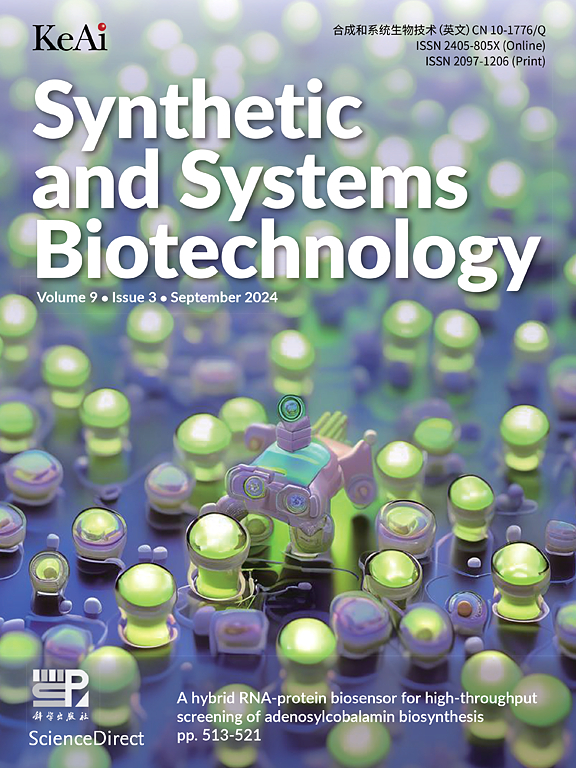双功能假糖基转移酶ValL催化非糖苷C-O键形成
IF 4.4
2区 生物学
Q1 BIOTECHNOLOGY & APPLIED MICROBIOLOGY
引用次数: 0
摘要
C7N抗生素有效性霉素A是一种广泛用作作物保护剂的抗真菌剂。它包括一个与葡萄糖片段连接的validoxylamine a单元,该单元通过连接valenol片段和validamine片段的非糖苷C-N键形成,该反应由假糖基转移酶ValL催化。本研究对井冈吸湿链霉菌TL01中有效霉素的化学成分进行了分析。在培养上清液中发现了一系列新的氧桥类似物,即validomycin、validomycin和1,1 ' -双valienol,并利用一二维核磁共振和质谱技术对其化学结构进行了分析。基因破坏和互补实验表明,valL对于这些新的有效霉素氧桥类似物的生物合成是必不可少的。生化实验进一步证明,ValL催化GDP-valienol和valienol-7-磷酸之间的C-O键形成,生成1,1 ' -二valienol-7-磷酸,随后被ValO去磷酸化,并被ValG糖基化,生成validomycin。总的来说,我们的研究结果揭示了ValL催化非糖苷C-O偶联的独特能力,可能使C7N家族抗生素的各种化学支架的产生成为可能。本文章由计算机程序翻译,如有差异,请以英文原文为准。
Nonglycosidic C–O bond formation catalyzed by a bifunctional pseudoglycosyltransferase ValL
The C7N antibiotic validamycin A is an antifungal agent widely used as a crop protectant. It comprises a validoxylamine A unit linked to a glucose moiety, which is formed through a nonglycosidic C–N bond connecting a valienol moiety and a validamine moiety, a reaction catalyzed by the pseudoglycosyltransferase ValL. In this study, we analyzed the chemical composition of validamycins in Streptomyces hygroscopicus var. jinggangensis TL01. A series of novel oxygen-bridged analogues, namely, validenomycin, validomycin, and 1,1′-bis-valienol, were identified in the culture supernatants, and their chemical structures were elucidated using a combination of one- and two-dimensional nuclear magnetic resonance and mass spectrometry. Gene disruption and complementation experiments revealed that valL is essential for the biosynthesis of these new oxygen-bridged analogues of validamycins. Biochemical assays further demonstrated that ValL catalyzed the C–O bond formation between GDP-valienol and valienol-7-phosphate, producing 1,1′-bis-valienol-7-phosphate, which was subsequently dephosphorylated by ValO and glycosylated by ValG to yield validenomycin. Collectively, our findings revealed the unique ability of ValL to catalyze nonglycosidic C–O coupling, potentially enabling the generation of various chemical scaffolds for C7N family antibiotics.
求助全文
通过发布文献求助,成功后即可免费获取论文全文。
去求助
来源期刊

Synthetic and Systems Biotechnology
BIOTECHNOLOGY & APPLIED MICROBIOLOGY-
CiteScore
6.90
自引率
12.50%
发文量
90
审稿时长
67 days
期刊介绍:
Synthetic and Systems Biotechnology aims to promote the communication of original research in synthetic and systems biology, with strong emphasis on applications towards biotechnology. This journal is a quarterly peer-reviewed journal led by Editor-in-Chief Lixin Zhang. The journal publishes high-quality research; focusing on integrative approaches to enable the understanding and design of biological systems, and research to develop the application of systems and synthetic biology to natural systems. This journal will publish Articles, Short notes, Methods, Mini Reviews, Commentary and Conference reviews.
 求助内容:
求助内容: 应助结果提醒方式:
应助结果提醒方式:


